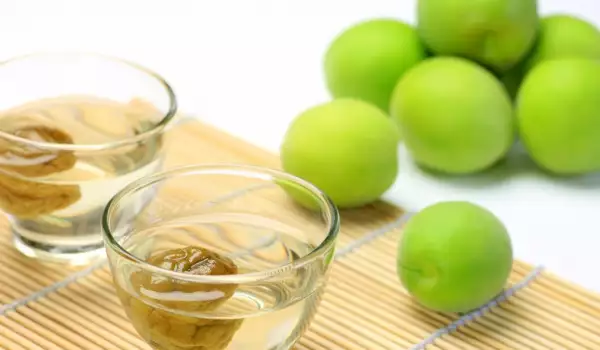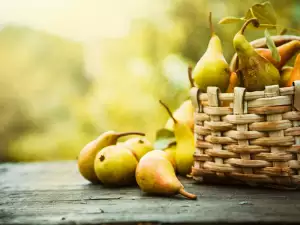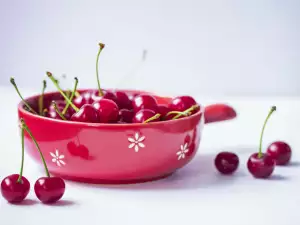Cherry plums are the fruits of the flowering plant Prunus cerasifera, belonging to the Prunus genus and Rosaceae family. Usually these plants reach a height of 19.5 ft (6 m) to 49 ft (15 m), looking like either large bushes or trees of a smaller size. Typically, the fine white flowers of the plant can be seen from mid-February or toward the end of it.
Prunus cerasifera leaves are ellipsoid and green colored. They are 1 1/2″ (4 cm) to 2 1/2″ (6 cm) long. The most important and undoubtedly most delicious part of the plant are its fruits. They are round and colored yellow or red, reaching up to 1 1/4″ (3 cm) in diameter. Their flesh is soft and juicy, hiding a pit inside. Sometimes the pit is easy to remove, other times not so. It depends on the variety. The flesh is dense and sweet, with a sour tinge. It's covered by a shiny skin.
The trees of Prunus cerasifera are in no way inferior to the rest of the representatives of the genus. A very positive characteristic of them is their high fertility. Adult trees can sometimes yield 661 lb (300 kg) of cherry plums. Characteristic of them is the fact that they grow very fast. This type of plant is thought to be native to the Balkans. They are highly widespread in Europe as well as in the Middle East.
Composition of Cherry Plums

Cherry plums are a source of many healthy substances. Their composition includes water, fibers, sugars, proteins. They contain vitamin C, vitamin A, vitamin B4, vitamin B9 and vitamin K. Plus they are a source of pectin, organic acids, calcium, phosphorous, magnesium and others.
Growing Cherry Plums
Experts recommend planting plants of different cultivars for the purpose of successful pollination and fertilization. Usually, Prunus cerasifera are planted in 20 ft (6 m) x 13 ft (4 m) plots, with these parameters able to vary depending on the conditions present in your garden. It's also advised to water the tree 2 weeks before the fruits begin to ripen. Cherry plums are not particularly vulnerable to diseases which is why you don't need to do anything special in that regard.
Sometimes however, the young saplings are attacked by plant lice. In the first few years, the plants grow rapidly. They are cold and drought resistant and can thrive in different types of soil. Prunus cerasifera gives fruits quickly. Cherry plums are collected by shake down or with a fruit picker. But of course always clear the zone underneath the tree from weeds and debris beforehand. To make it easier you can lay down a canvas or tarp. Once the cherry plums are down, remove any damaged fruits and use the rest as intended.
Choosing and Storing Cherry Plums
When picking out cherry plums we need to consider several things. The fruits must not be too soft. Their appearance needs to be fresh, their surface smooth. Once picked, ripe cherry plums do not remain fresh for long. They spoil easily, which is why it's advised to consume them as soon as possible.
Cooking with Cherry Plums
The juicy and sweet flesh of cherry plums makes them suitable for all sorts of culinary experiments. Over the years, chefs have found use for them in various marmalades, jams, nectars, compotes, dried fruit mixes and even pickled and canned foods. Their characteristic sour taste makes them a perfect ingredient in specialties such as broad beans with cherry plums, soup with cherry plums and clay pot with vegetables and cherry plums. Rakia made from cherry plums remains an emblematic product in Eastern Europe. It can be made from myriad varieties of Prunus cerasifera as long as they have ripened all at the same time.

Benefits of Cherry Plums
Cherry plums are fruits that possess numerous beneficial qualities. They provide energy for the body and priceless nutrients. Since they are a source of fibers, these tasty round fruits aid normal digestion and are excellent if suffering from constipation and lazy bowels. According to some folk healers, cherry plums help against vomiting and flabbiness. They provide energy to the body and improve tone and as such are recommended for people who frequently feel faint and tired.
They also aid metabolism. Some experts claim that cherry plums successfully prevent osteoporosis and have a positive effect on women who have entered menopause. Curiously, the flowers of Prunus cerasifera are also used in homeopathy. The essence from them is put into supplements used against fear, physical and mental exhaustion, sleep problems.
Dangers of Cherry Plums
Even though they are so delicious and healthy, one shouldn't overconsume cherry plums, especially if they are not well ripened. People with sensitive stomachs need to be most cautious since increased consumption of green unripened fruits can cause diarrhea.




















Comments